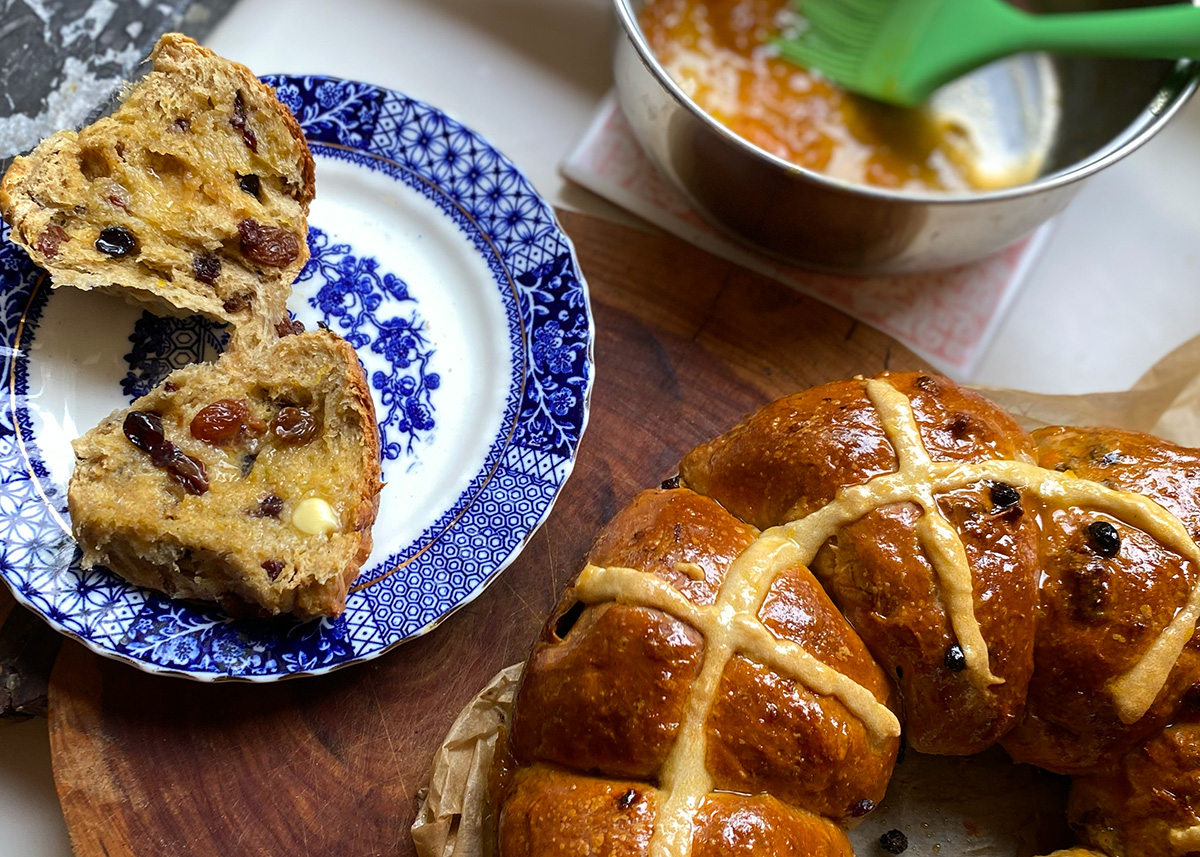Ingredients
Fruit soak
70g sultanas
70g currants
1 orange, zested and juiced
Tangzhong – also known as a water roux or yu-dane, this is a paste of flour cooked in water or milk to over 65 °C which is used to improve the texture of bread and increase the amount of time it takes to go stale.
1 tbsp plain all-purpose flour
1/4 cup water
1/2 cup full cream milk
Bun Dough
1 egg at room temperature
325g plain flour plus extra for kneading and rolling – we used strong bread making flour
2 tsp dried yeast (check it’s not passed it’s use by date)
1/2 tsp salt
25g brown sugar
1 1/4 tsp ground cinnamon
1/2 tsp ground coriander
1/2 tsp ground nutmeg
¼ tsp ground all spice
50g butter cut into cubes and softened
Paste for the crosses
40g plain flour
3 tbsp of water
Remaining half of orange juice and apricot jam for glazing the tops!
Summary
These are the best hot cross buns. We mean it. They’re generous on fruit, balanced on spice and have a secret hint of zesty orange to brighten up the whole experience. We wrote this recipe with inspo from Alice Zaslavsky and Lisa Featherby. Pass the butter, it’s going to be a great Friday.
You’ll find tips on how to make the night before at the bottom of the recipe.
Hot Cross Buns
Place sultanas, currants, orange zest and half the juice in a small bowl and stir to combine. Cover and leave to soak.
To make the tangzhong. Add the water and the flour to a small saucepan. Stir vigorously with a wooden spoon over medium heat for 2 minutes; the mixture will start to thicken and become glossy at this point. Turn the heat off. Add the milk and whisk well, cooling the temperature down. Set aside.
Next, make the bun dough, which you can do by hand (we did this) or using a stand mixer.
By hand
Use a whisk to combine the tangzhong and egg into a uniform custardy colour. Put the flour, sugar yeast, salt and spices in a large bowl, giving it a mix to evenly distribute. Make a well in the centre and pour in the egg mixture, stirring until it comes together (it’ll be scraggy and/or sticky). Turn out onto a lightly floured bench and start kneading. The mixture will be a bit hard to handle, but persevere for 5 mins, and keep some flour handy to dust the bench now and then — but not too much, as this is a loose dough.
Once it’s become manageable, start adding the butter, one cube at a time. Knead into a luscious, elastic dough; this will take about 10 minutes. The process will be messy, but it does work. Once done, add the dough to a clean bowl. Cover and let rest for 15 mins (the dough will be easier to work with after a rest).
Stand mixer
Place the tangzhong and eggs in the mixer bowl. Using the paddle attachment, mix for a minute or so, until blended. Switch over to the dough hook and add the flour, sugar, yeast, salt and spices. Give them a whirl on low speed for 5 minutes, scraping down the side of the bowl now and then.
When the dough has stopped clinging to the bowl, up the speed a little to medium–low and, with the motor running, start adding the butter, a few cubes at a time. Wait for it to assimilate before adding more. Continue to do this for about 10–15 minutes, scraping down the bowl every now and then, if needs be, until the dough is lusciously soft and elastic and comes away from the side of the bowl with ease. If it is still sticking, add another tablespoon or two of flour — max! — and keep mixing until incorporated. Cover and let rest for 15 mins (the dough will be easier to work with after a rest).
Adding fruit
While resting the dough, place a colander over a bowl and drain the soaked fruit from any remaining juice, stir it to encourage the draining (there’ll be minimal liquid, but it helps keep the dough drier). Set both fruit and juice aside separately.
When your dough is rested pop onto a lightly floured surface and flatten into a rectangle shape. Sprinkle your soaked and drained fruit across the dough and then roll up into a log. Now knead to incorporate all the fruit through the dough. It’ll be sticky and there’ll be fruit trying to escape, just keep persevering for 5 minutes. Collect it all up, pop it back in the bowl, cover and leave in a warm spot for 1-2 hours, or until doubled in size.
Line a baking tray with baking paper. Divide the dough into 8. Shape them into rounds, with a smooth top (watch this vid for some guidance), and place onto your lined baking tray. Sit them quite close to each other so when they rise and bake, they stick together. Cover and rest until doubled in size again, approx. 30 minutes.
Preheat your oven to 180℃ (for fan, drop the heat to 160℃).
5 mins before your dough has finished resting, make your flour paste by combing both ingredients and mixing until smooth. Transfer to a piping bag (or, we use a ziplock bag that we snip and wash for reuse). When the dough is rested, pipe your flour paste across the buns to form the crosses.
Bake the buns on the middle rack of the oven for 30–40 minutes, or until they’re golden brown, and a skewer comes out clean of dough.
While they are cooking, place the other half of the orange juice and 1 tbsp of apricot jam in a small pan and bring to a simmer, stirring to incorporate. Turn off the heat and set aside.
When the hot cross buns are ready and hot out of the oven, brush with the orange and apricot glaze and let them cool.
These buns are best eaten within the first 2–3 days and can be brought back to life by toasting or a little time in the oven to reheat. Store in an airtight container in the fridge.
To make a day ahead
Begin the process at around 6pm. Follow the above instructions until you have shaped the buns and they are ready for their final rise. You can place the buns in the fridge at this point and leave them overnight. Next morning, pull them out of the fridge and leave somewhere warm for 1.5-2 hours until the chill from the fridge has gone and the yeast is reactivated – we like to wrap a hot water bottle in a couple of tea towels and rest the tin on that, but a super sunny window sill or in front of the heater would work too.
Then follow the steps above from preheating the oven onwards.
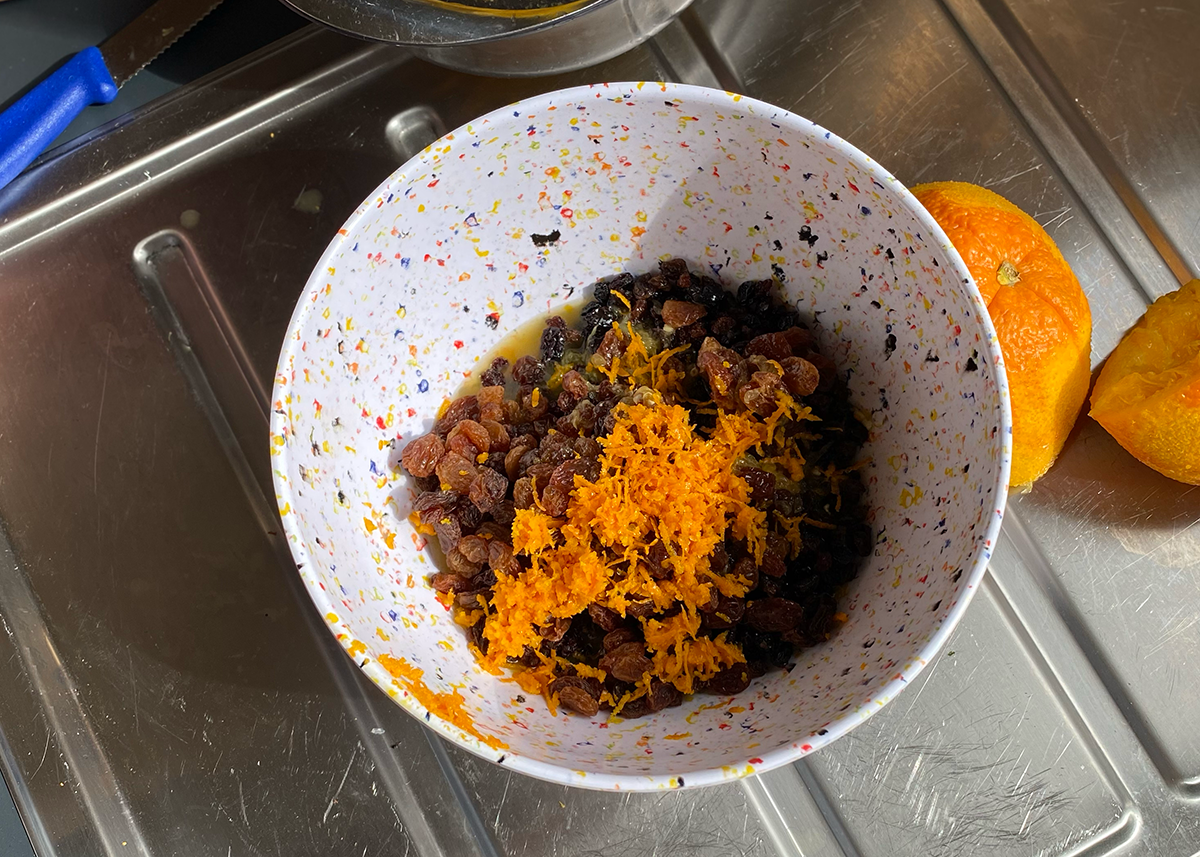
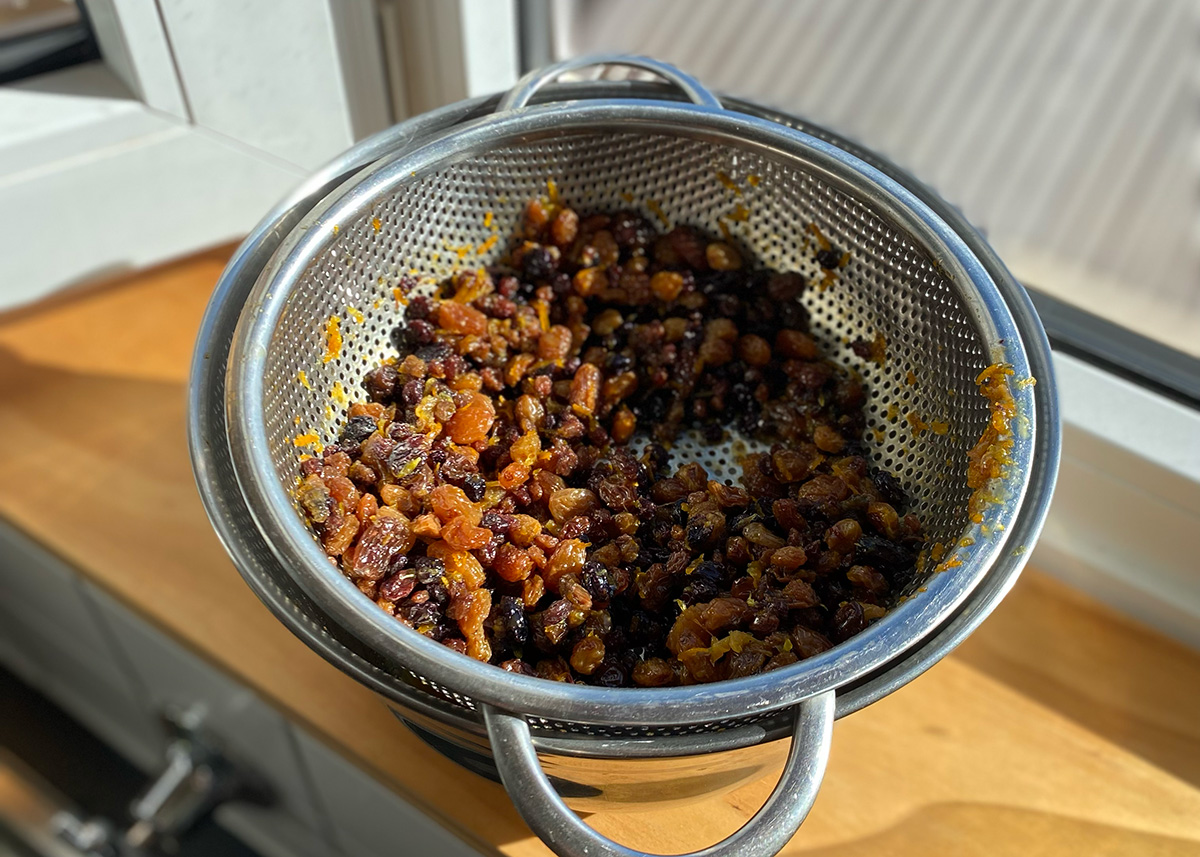
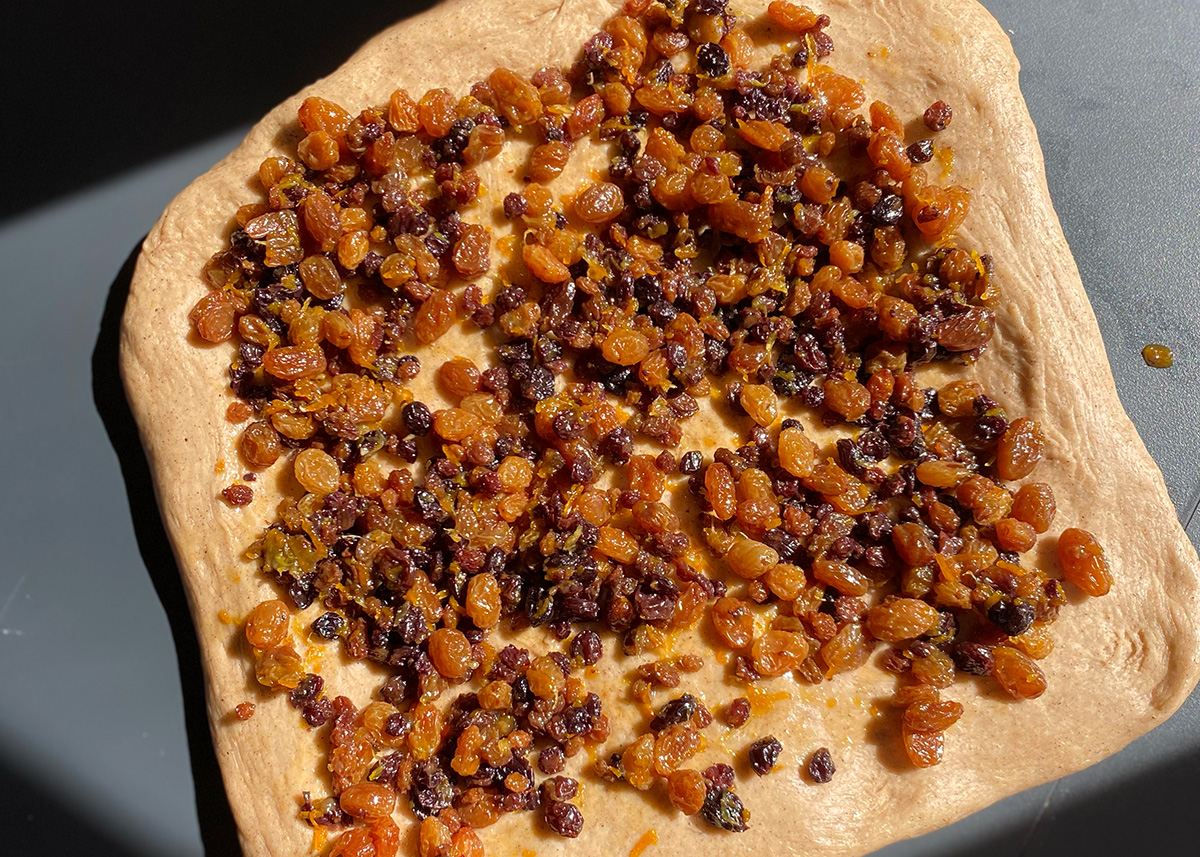
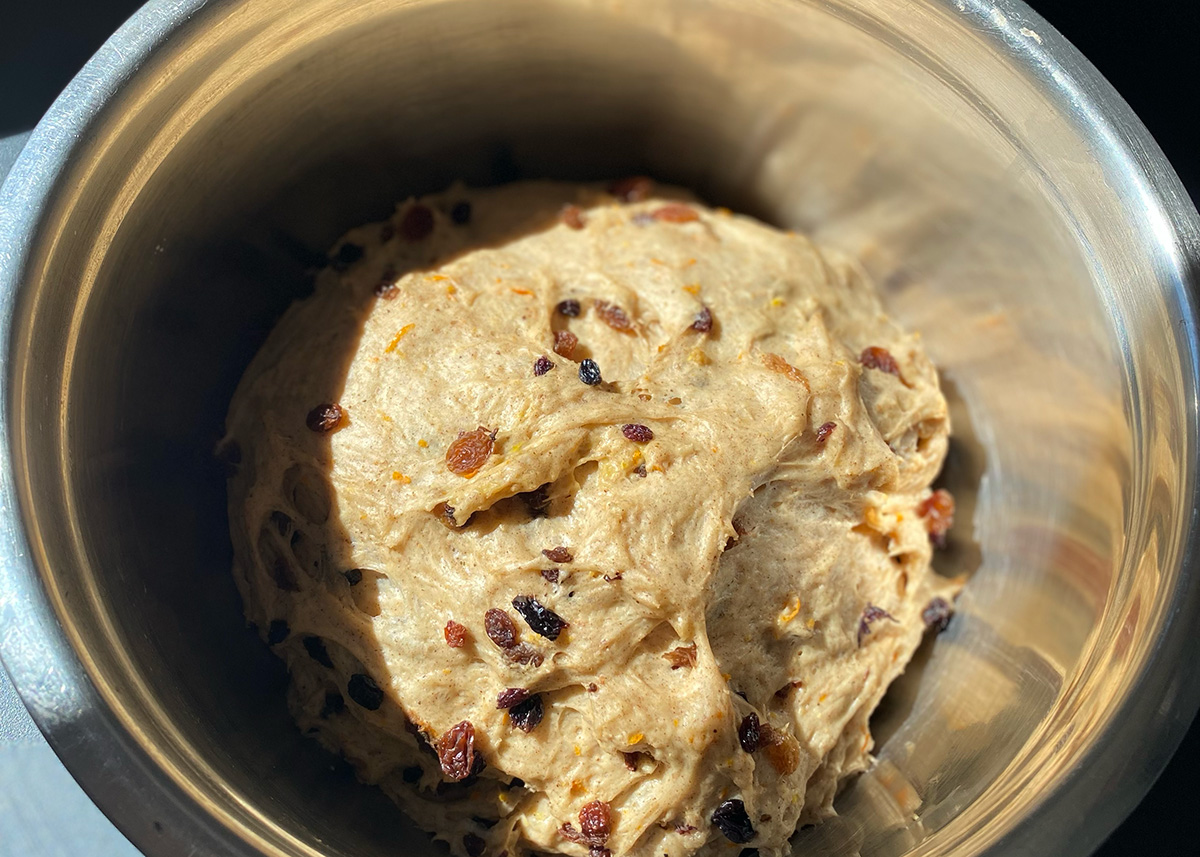
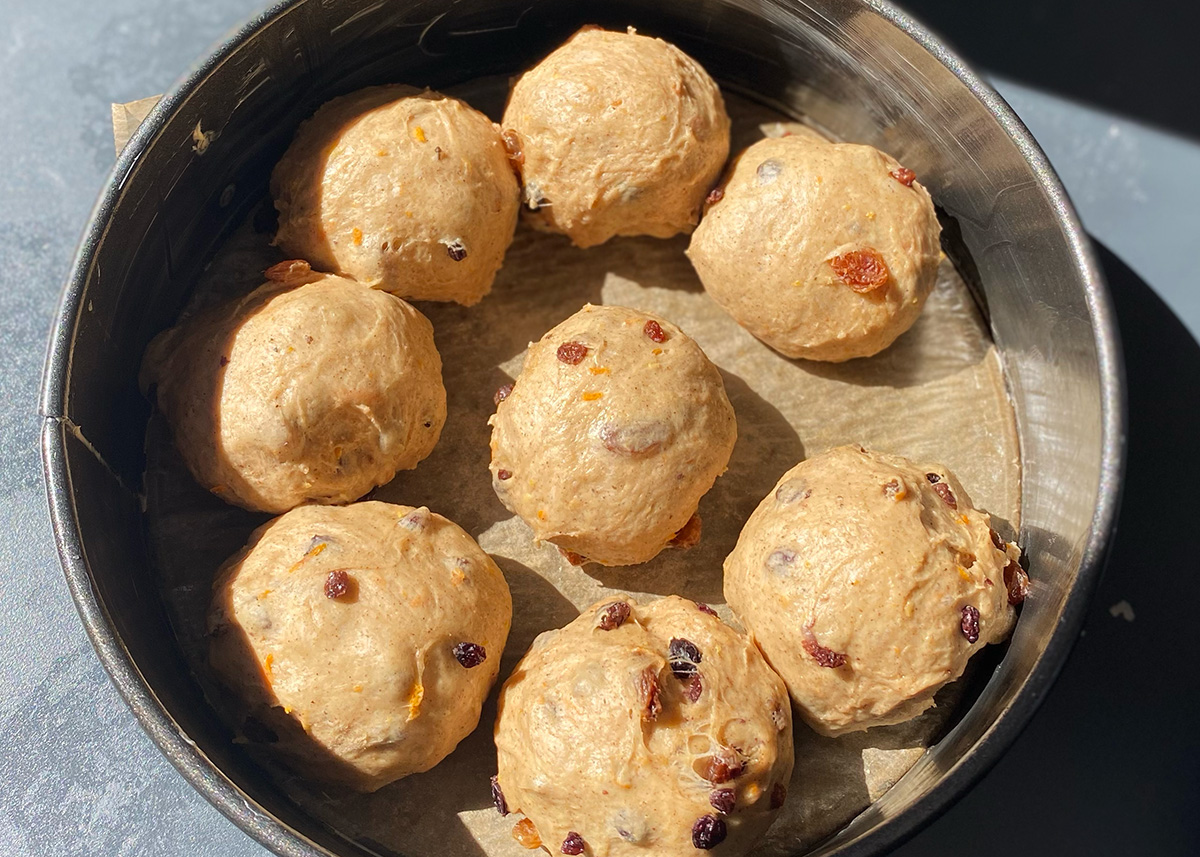
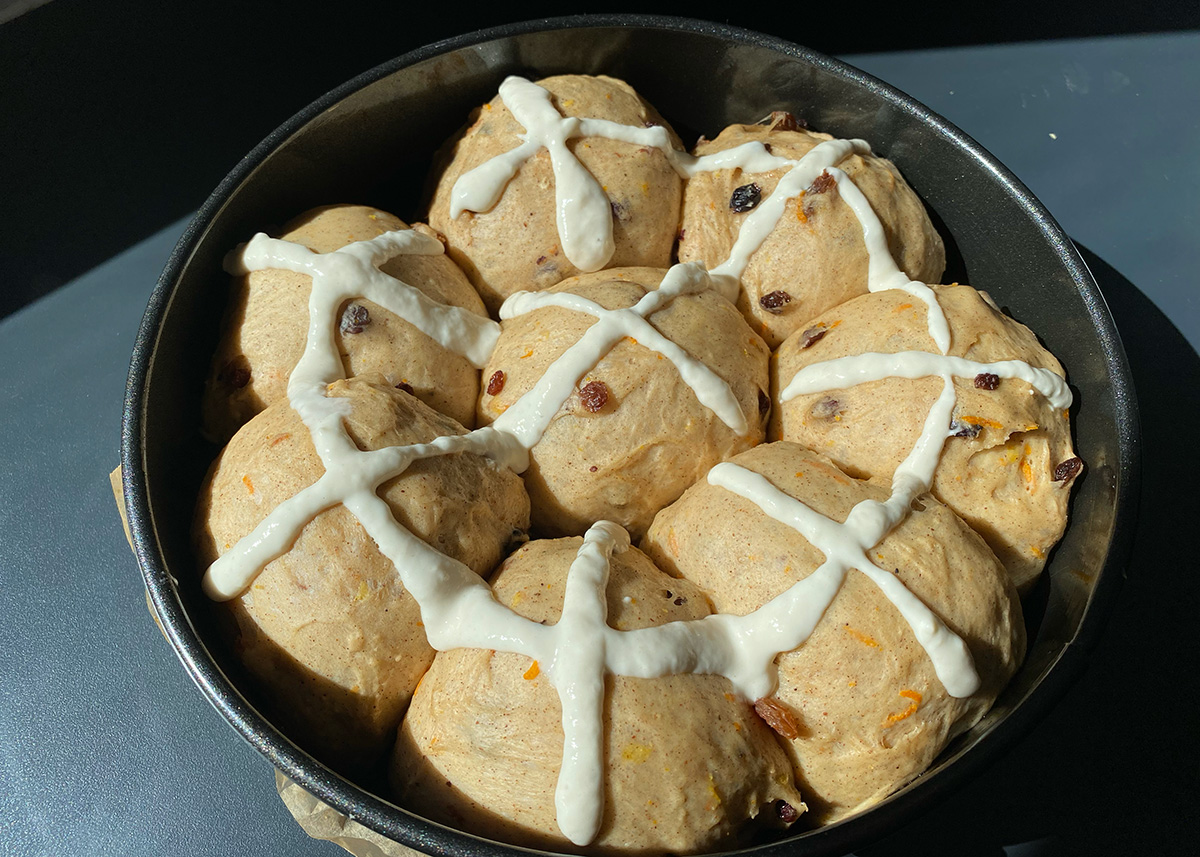
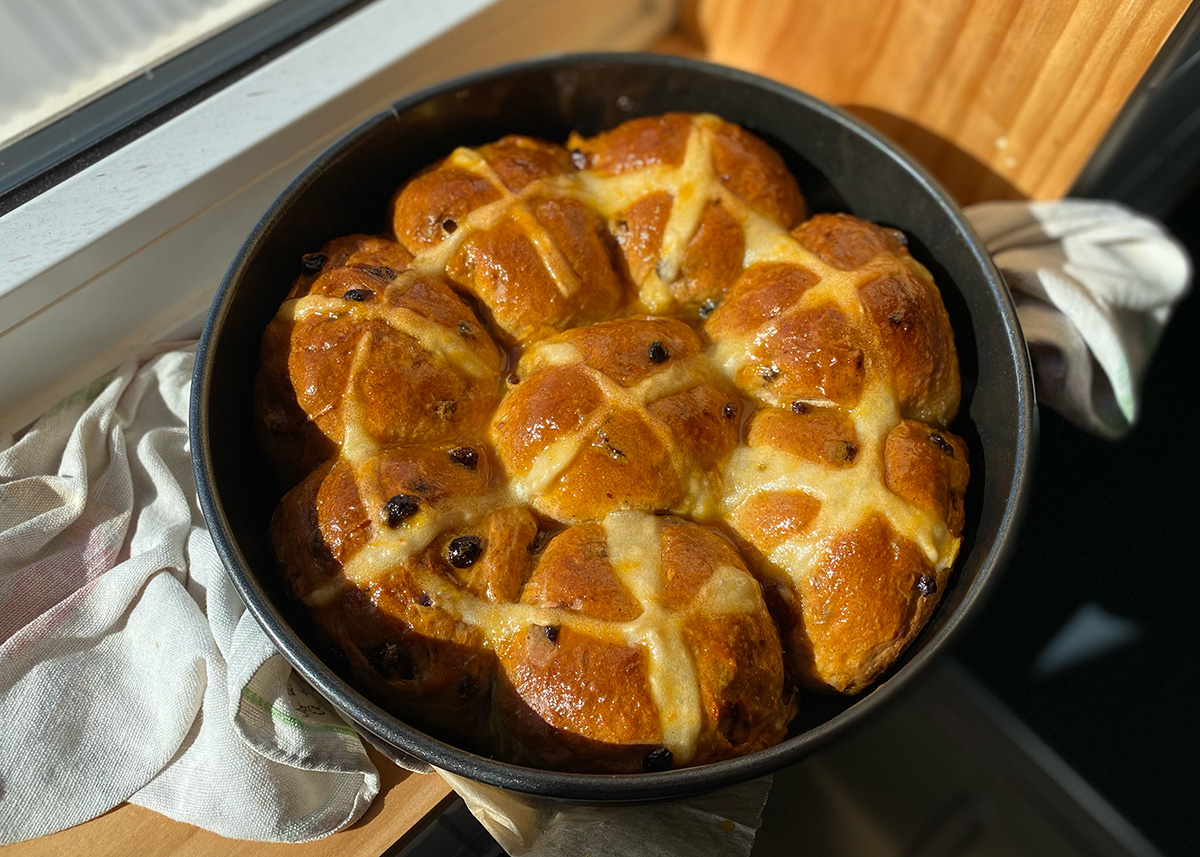
These buns were made in one day ^
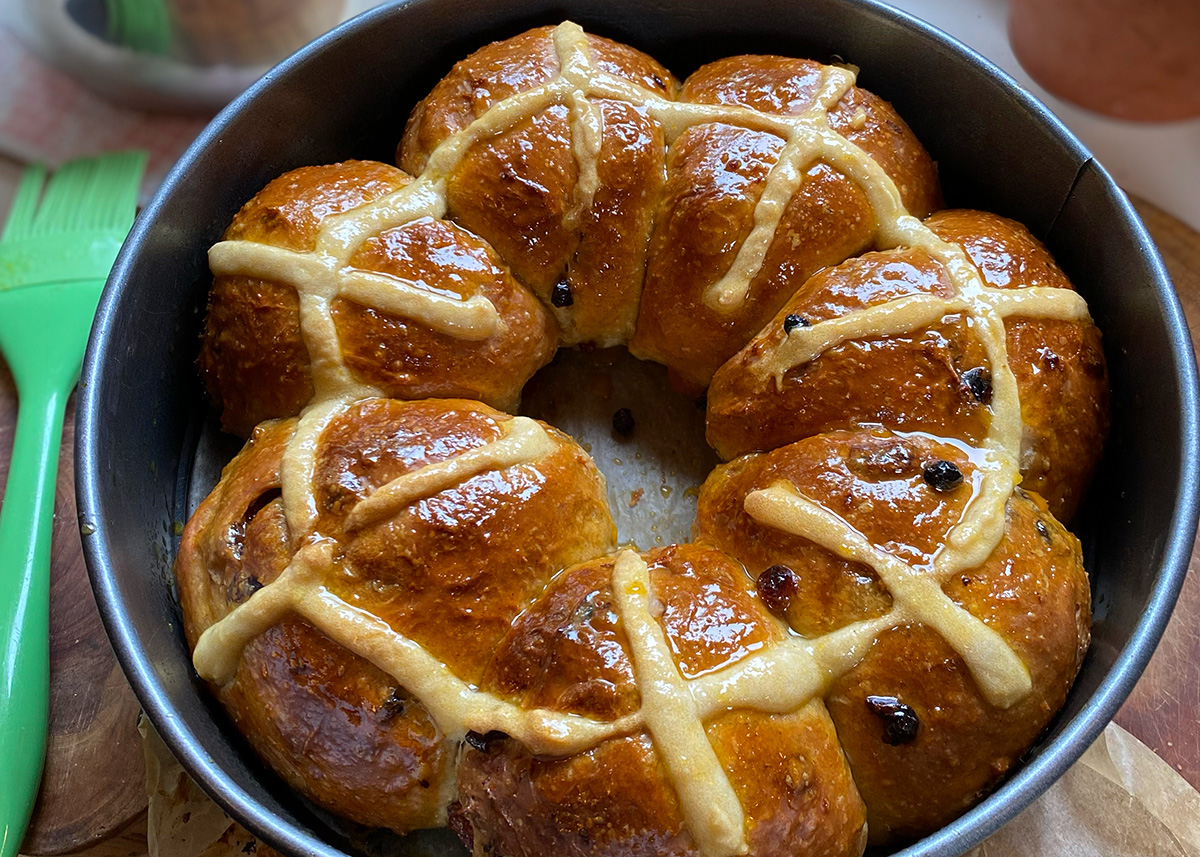
These buns were made the night before and baked the next morning ^
